Having the ability to proceed from planning and thinking to taking action can be daunting. For the inexperienced it can be appear to be downright impossible. Breaking down everything to it's core idea is how I like to approach projects. I've already developed a mental model of the "steps" that will be required to build this thing in a particular manner, along with several contingencies for approaches to resolution of problems that may arise. I haven't been crippled by planning doomerism, rather I allotted a period of time to familiarize myself with the design criteria and the site conditions. I modeled the space in a 3D design software that I use in the cloud. It's called Fusion 360 by Autodesk. It is an all-in-one design and CNC programming tool with many other features. It's strength is in direct-modeling and parametric control.
I knew we had a set of hinges for each shelf, obtained from the Amazon Vine Voice program, a whole other story: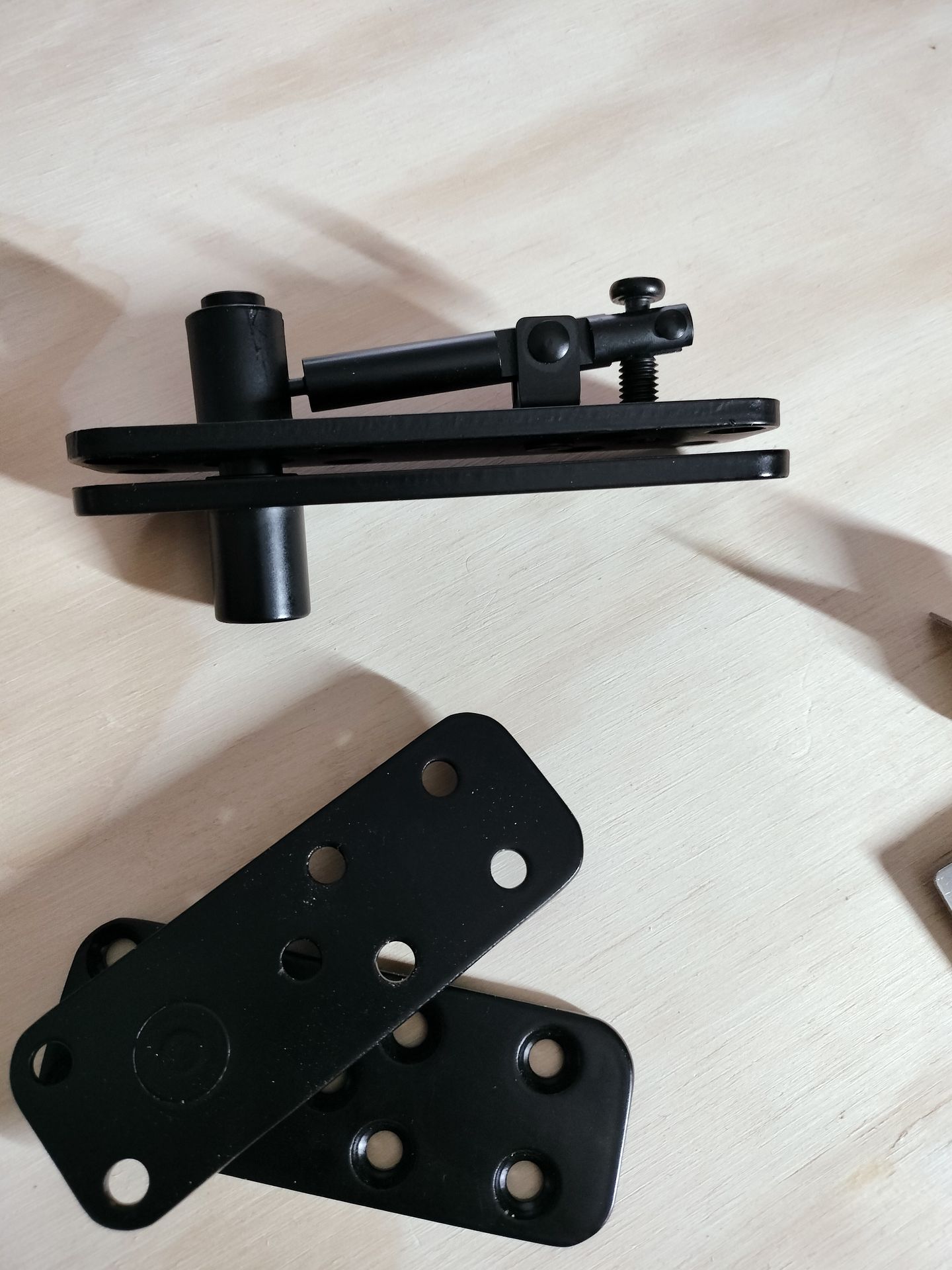
Here's an example of the prototyping of the assembly, then it's division into spec-controlled parts. Starting from a sketch prior to getting the confirmed dimensions I free-style constructed from solid primitives fully parameterized machinable parts ready to build. In the world of philosophical and perhaps psychological discussion there is a concept called "systems over goals". It orients the effort and value of one's thinking toward being able to get the best results possible in any given set of circumstances. The simpler version focused on what you do on the ground is sometimes called an OODA loop. The acronym stands for observe, orient, decide, act. The theory is systems over goals, the practice is OODA. So my focus while preparing for this project was in understanding the requirements to execute and developing techniques to produce cut lists and models. The digital models created in Fusion 360 allow for generation of CAD drawings, renderings, animations, and a lot more. Posting the drawings and videos to Facebook Messenger is easy and doesn't require the end-user to have Fusion or anything installed that they don't probably already use, such as their basic text or photo apps.
 Starting with a sketch to outline the area, I went with an arbitrary dimension that is sometimes present in real life.
Starting with a sketch to outline the area, I went with an arbitrary dimension that is sometimes present in real life.
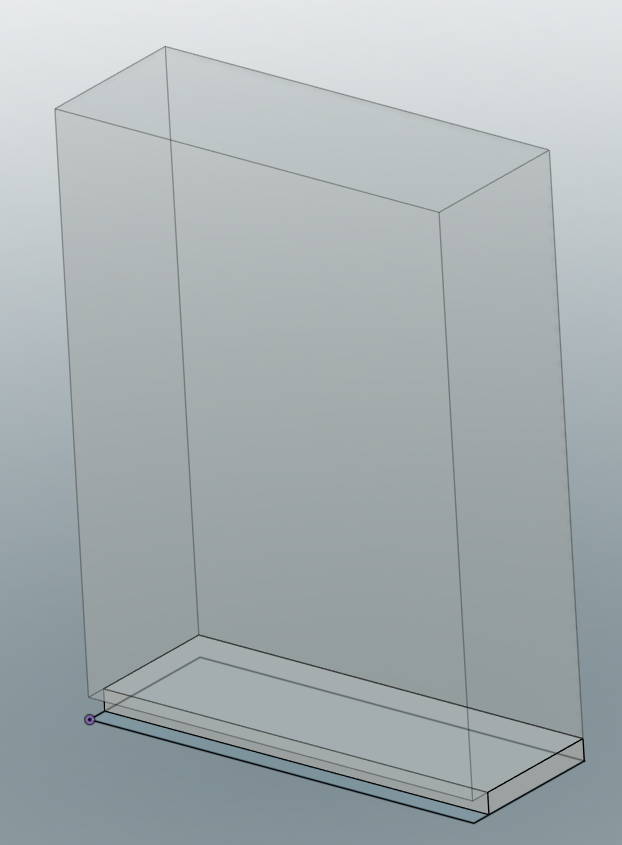
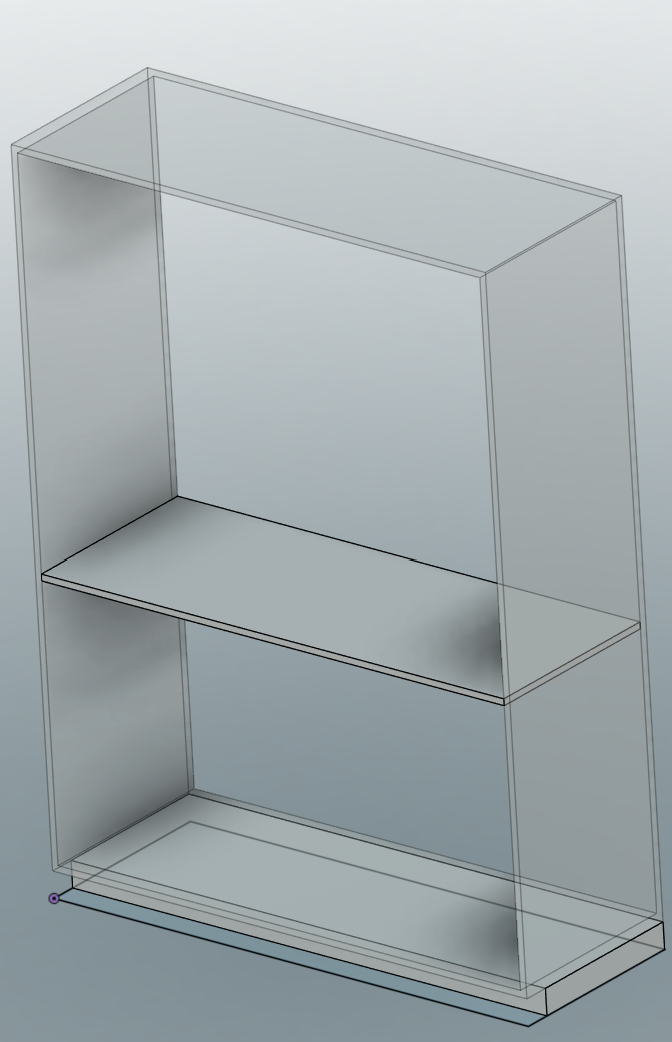 The sketch is extruded up to the height of the typical closet opening, and "shelled" to make it a 3/4" thick object. Slices are made according to the planes and butt locations, and pieces are push-pulled and moved as needed. Using particular techniques will allow the model to regenerate according to resizing of the original sketch.
The sketch is extruded up to the height of the typical closet opening, and "shelled" to make it a 3/4" thick object. Slices are made according to the planes and butt locations, and pieces are push-pulled and moved as needed. Using particular techniques will allow the model to regenerate according to resizing of the original sketch.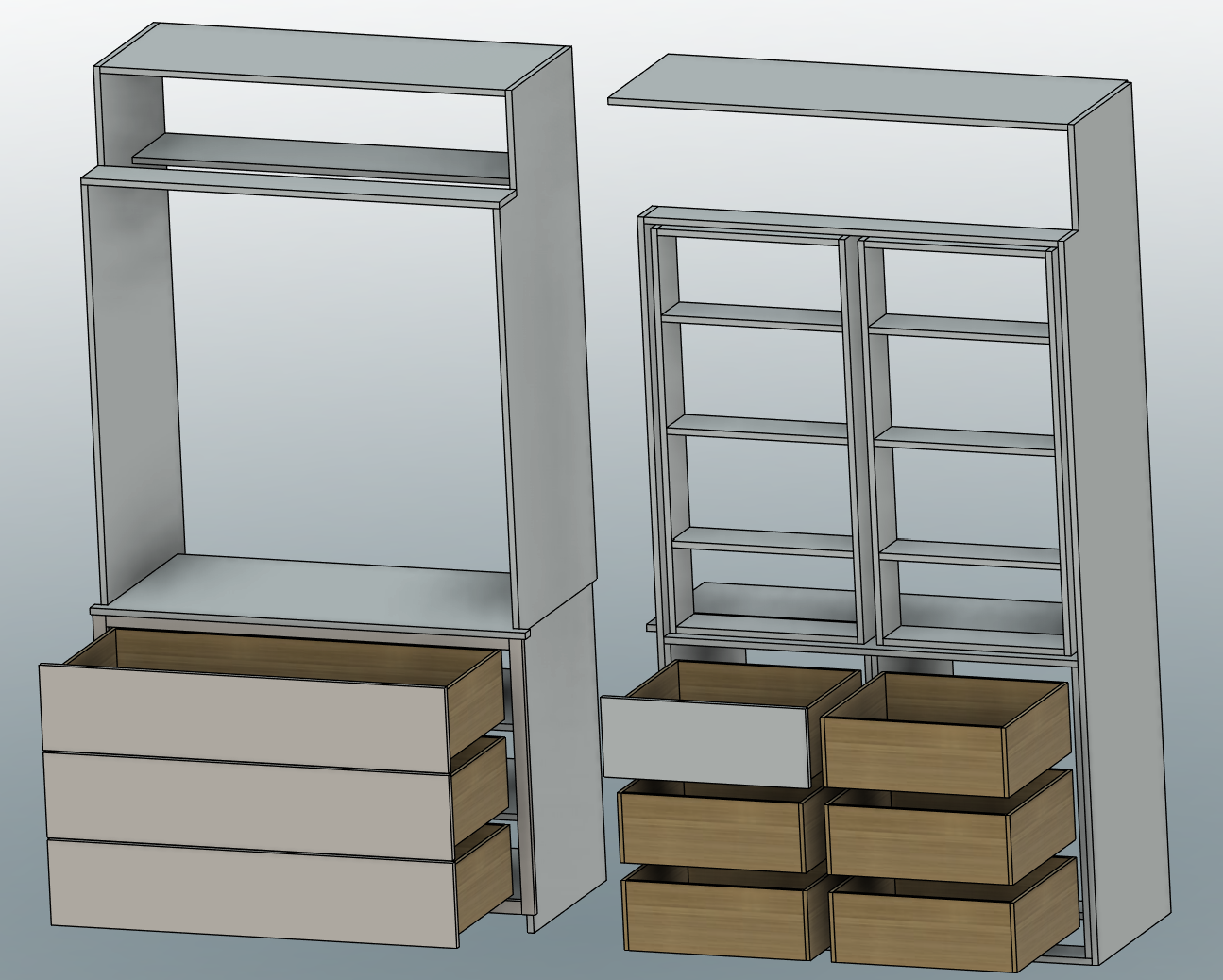
We played with several ideas about how to build the lower part, and found the upper part doesn't require the build-out inside the closet as shown in the early prototypes.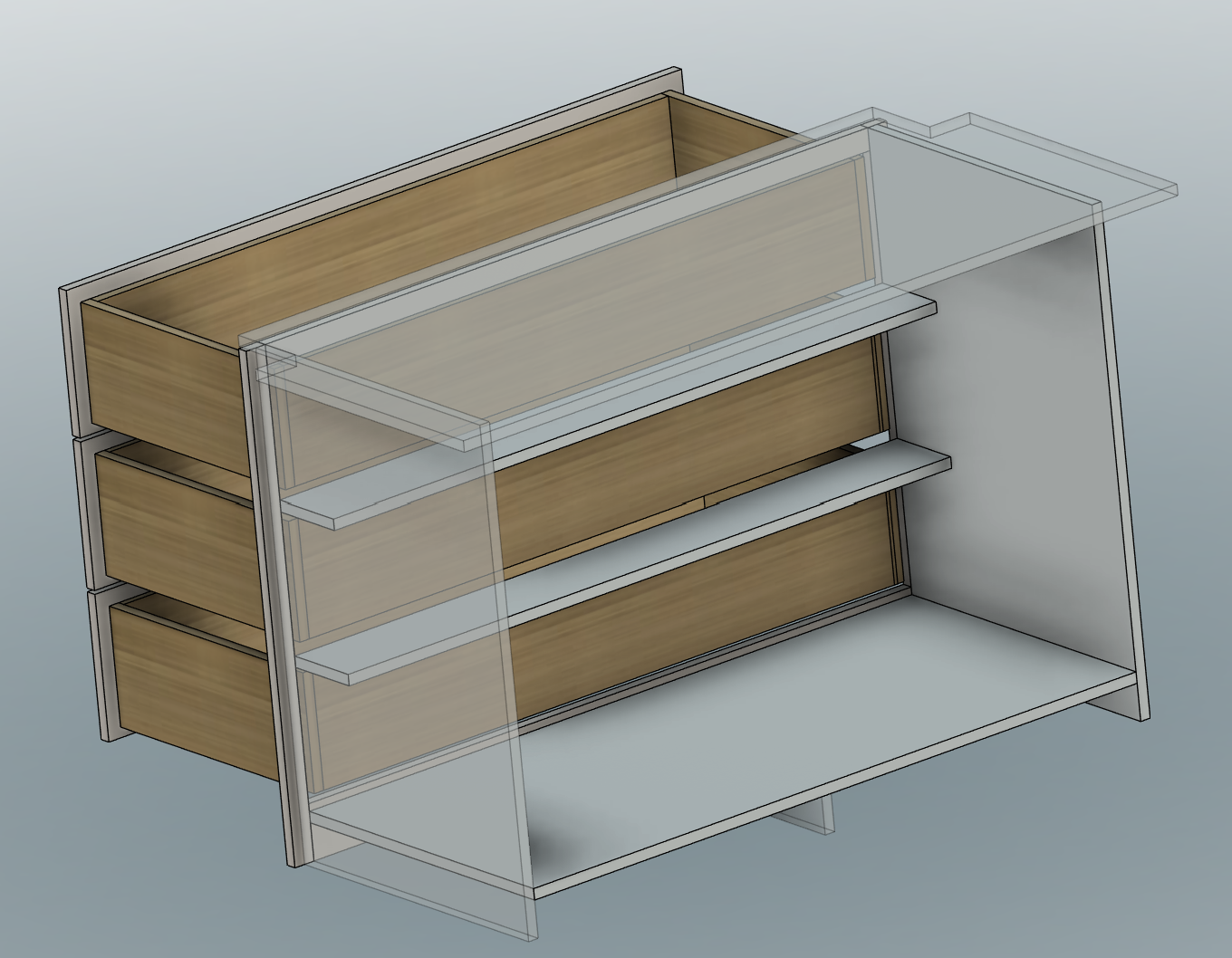
With a fully modeled understanding of the whole project I have the confidence and literal experience needed to execute the requirement. Making the cuts according to the model parameters and adjusting for manufacturing variance is now the name of the game. With the base carcass built up I can test the full-width drawers with the full-extension slides we have on hand. They are rated at 170lbs for the pair, but I want to directly observe how well they perform. I may install a stop that keeps them at 3/4 extension, or in the worst case I will choose another slide. 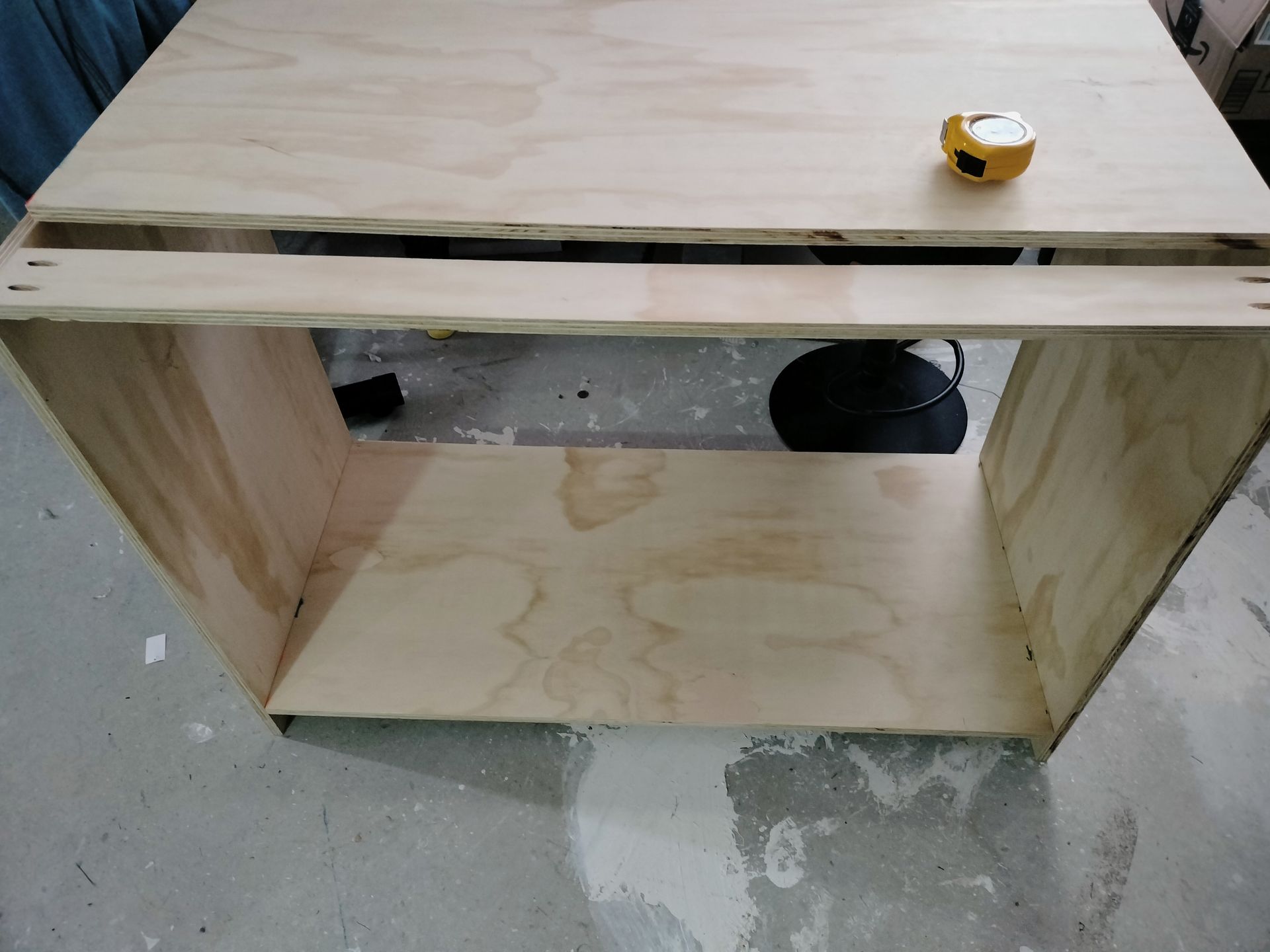
The next step will be to cut parts for the drawers. Building one up, testing it, then proceeding based on findings. After the drawers are built up and tested, the assembly can be fitted into its location. That will allow the deck that goes on the lower unit as well as the door frame to be built to conditions and concluding the rough-in of the lower unit.